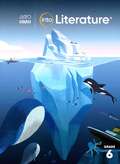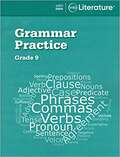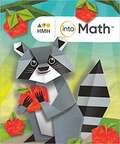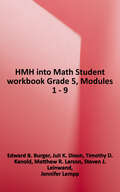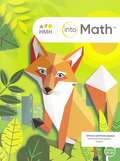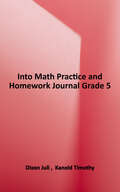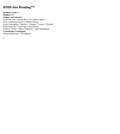- Table View
- List View
Into Literature: Grade 10
by Houghton Mifflin HarcourtInto Literature Student Edition Hardcover VRS1 Grade 10
Into Literature: Student Edition (Into Literature Series)
by Houghton Mifflin HarcourtIncludes Teacher's editions, Student editions, and Program guides for grades 6-12.
Into Literature: Student Edition (Into Literature Series)
by Kylene Beers Tyrone C. Howard Martha HougenNIMAC-sourced textbook <p>Grade 12</p>
Into Literature™: Grammar Practice Workbook Grade 9 (Into Literature Series)
by Houghton Mifflin HarcourtNIMAC-sourced textbook <p>Grade 9</0>
Into Math™ [Grade 2], Modules 1–3: Grade 2, Modules 1-3
by Timothy D. Kanold Edward B. Burger Juli K. DixonNIMAC-sourced textbook <p>Grade 2, Modules 1-3</p>
Into Math™ [Grade 3], Volume 1, Modules 1-12
by Timothy D. Kanold Edward B. Burger Juli K. DixonNIMAC-sourced textbook
Into Math™ [Grade 3], Volume 2, Modules 13–20
by Timothy D. Kanold Edward B. Burger Juli K. DixonNIMAC-sourced textbook
Into Math™ [Grade 4], Volume 2, Modules 10–21
by Timothy D. Kanold Edward B. Burger Juli K. DixonNIMAC-sourced textbook
Into Math™ [Grade 5], Volume 1, Modules 1–9
by Timothy D. Kanold Edward B. Burger Juli K. DixonNIMAC-sourced textbook
Into Math™ [Grade 5], Volume 2, Modules 10 – 20
by Timothy D. Kanold Edward B. Burger Juli K. DixonNIMAC-sourced textbook
Into Math™ [Grade K] Modules 1–3
by Timothy D. Kanold Edward B. Burger Juli K. DixonNIMAC-sourced textbook
Into Math™, Grade 4, Practice and Homework Journal (Into Math)
by Houghton Mifflin HarcourtNIMAC-sourced textbook
Into Math™, Grade 4: Getting Ready For High Stakes Assessment (Into Math)
by Houghton Mifflin HarcourtNIMAC-sourced textbook
Into Math™, Grade 5, Getting Ready for High-Stakes Assessment: Getting Ready for High Stakes Assessment Grade 5 (Into Math)
by Houghton Mifflin HarcourtNIMAC-sourced textbook
Into Math™, Grade 5, Practice and Homework Journal
by Houghton Mifflin HarcourtNIMAC-sourced textbook
Into Math™, Grade 7 (Into Math)
by Timothy D. Kanold Edward B. Burger Juli K. DixonNIMAC-sourced textbook
Into Math™, Grade 8 (Into Math Ser.)
by Timothy D. Kanold Edward B. Burger Juli K. DixonNIMAC-sourced textbook
Into Math™, [Grade 4], Volume 1, Modules 1–9
by Timothy D. Kanold Edward B. Burger Juli K. DixonNIMAC-sourced textbook
Into Math™: Practice And Homework Journal Grade 3 (Into Math)
by Houghton Mifflin HarcourtNIMAC-sourced textbook
Into Math™: Student Edition, Accelerated Grade 7, 2020 (Into Math)
by Timothy D. Kanold Edward B. Burger Juli K. DixonNIMAC-sourced textbook
Into Reading MyBook 2, Grade 5 (Into Reading)
by Kylene Beers F. Campoy Alma AdaNIMAC-sourced textbook
Into Reading Student myBook: Volume 1
by Houghton Mifflin HarcourtAs you read, underline and highlight important words and ideas. Make notes about things you want to figure out or remember. What questions do you have? What are your favorite parts? Write them down! <p><p> Grade 4, 2020

